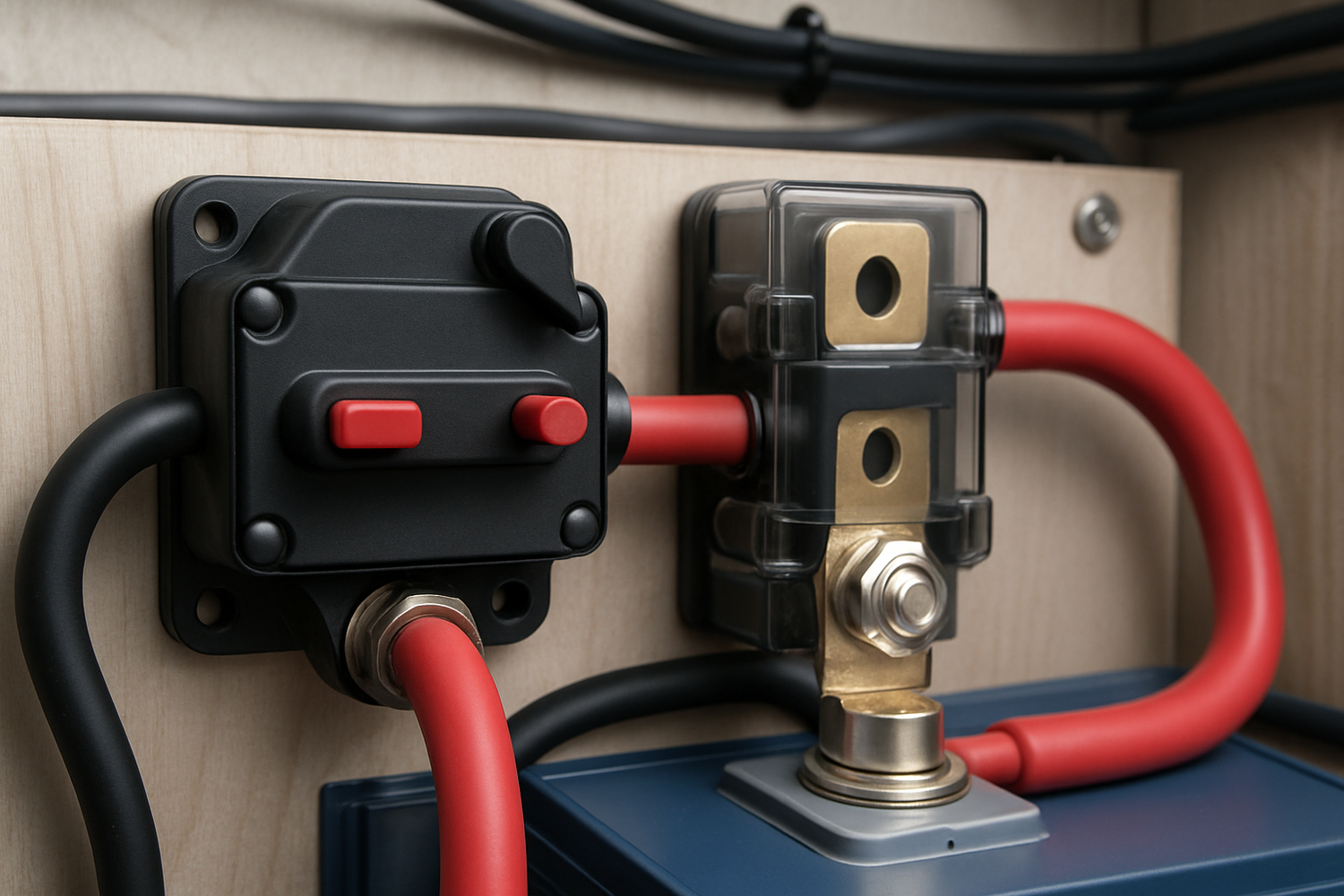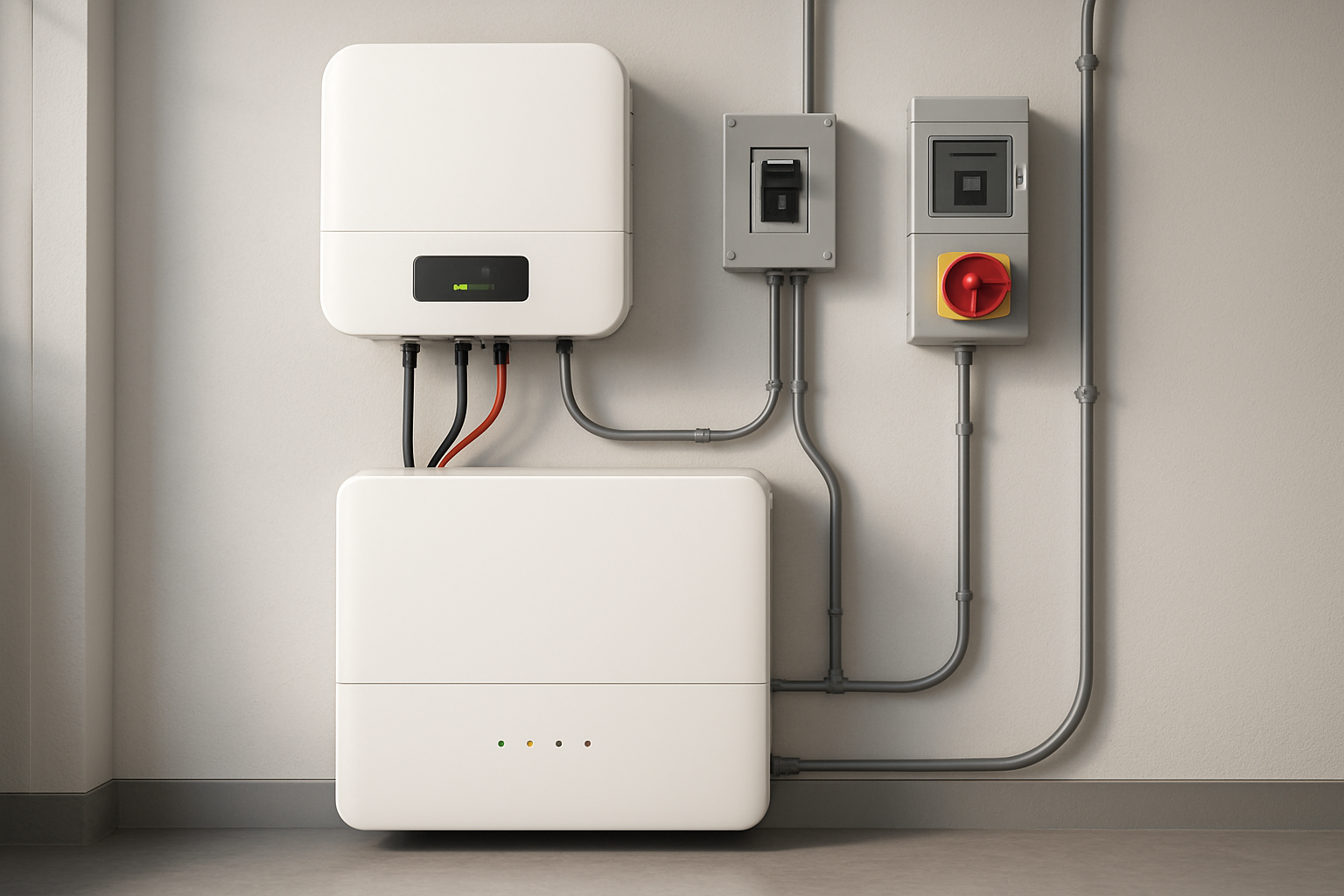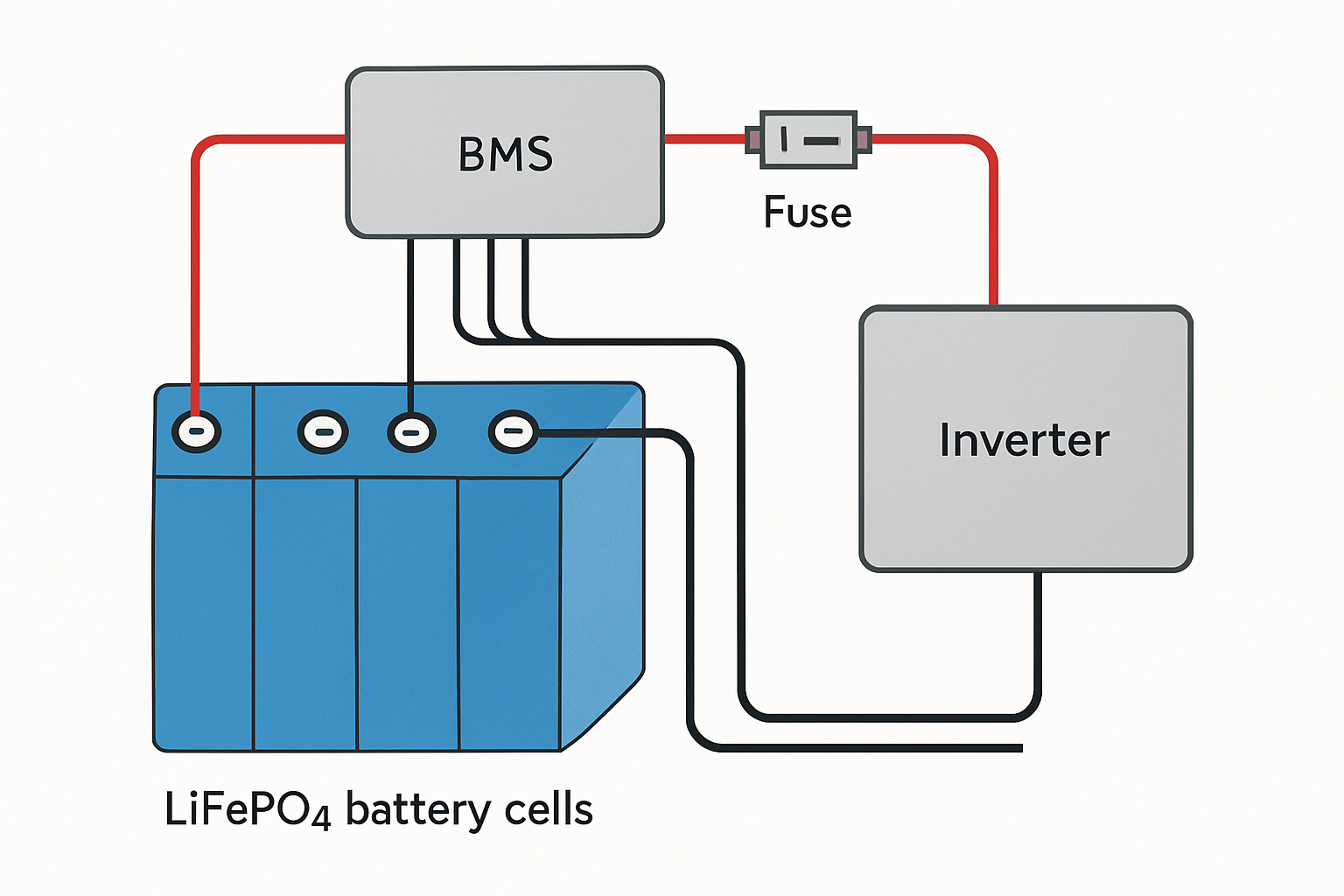Selecting the right overcurrent protection is a critical step in designing a safe and reliable energy storage system. For a LiFePO4 battery bank, which can deliver immense amounts of current, this choice is even more important. The two primary options are fuses and circuit breakers. While both serve to protect your equipment from damaging overcurrent events, they function differently and offer distinct advantages. This guide provides a clear comparison to help you make an informed decision for your LiFePO4 battery bank protection.
Understanding Overcurrent Protection in DC Systems
Before comparing the devices themselves, it's vital to grasp why this protection is non-negotiable for your battery bank and the specific challenges of Direct Current (DC) circuits.
Why Your LiFePO4 Battery Needs Protection
LiFePO4 batteries are known for their high performance, including very high discharge rates. In the event of a short circuit, they can release a massive amount of energy almost instantly. Without protection, this surge can melt wires, destroy connected equipment like inverters, and create a significant fire hazard. An overcurrent protection device is your first and most important line of defense against these catastrophic failures.
The Unique Challenge of DC Circuits
Protecting DC circuits is fundamentally different from protecting the Alternating Current (AC) circuits common in household wiring. AC power naturally reverses its direction, passing through zero volts many times per second. This zero-crossing point helps to extinguish an electrical arc when a circuit is interrupted. DC power flows continuously in one direction. According to a report by the International Renewable Energy Agency (IRENA), one of the main challenges for DC protection is the absence of zero-crossing currents, which makes faults more difficult to interrupt. This means that devices used for DC protection must be specifically designed to handle the sustained arc that can occur when the circuit is broken under load.
A Closer Look at Fuses
Fuses are the classic, straightforward solution for overcurrent protection. They are simple in design and highly effective when used correctly.
How Fuses Work
A fuse contains a thin strip of metal designed to melt and break the circuit if the current exceeds a specific level for a certain amount of time. Once the fuse 'blows,' it must be physically replaced to restore power. They are a one-time-use device, sacrificing themselves to protect the more expensive components in your system.
Advantages of Using Fuses
The primary benefits of fuses are their reliability and speed. Because they are simple mechanical devices, there are very few points of failure. Certain types, like Class T fuses, are extremely fast-acting and have a very high Ampere Interrupting Capacity (AIC), making them ideal for protecting sensitive inverters from the high fault currents of LiFePO4 batteries. They are also generally less expensive upfront and more compact than circuit breakers.
Disadvantages of Fuses
The most obvious drawback is that fuses are single-use. A blown fuse requires a manual replacement, which can cause inconvenient downtime, especially if you do not have spares on hand. There is also a risk of replacing a blown fuse with one of an incorrect rating, which could compromise the safety of your system.
A Closer Look at Circuit Breakers
Circuit breakers are a more modern and versatile alternative to fuses, acting as both a protective device and a manual switch.
How Circuit Breakers Function
A circuit breaker is an automatic switch that 'trips' (opens the circuit) when it detects an overcurrent. Most DC breakers use a magnetic or thermal-magnetic mechanism. After tripping, you can manually reset it by flipping the switch back to the 'on' position, restoring power without needing to replace any parts.
Advantages of Using Circuit Breakers
The key advantage is convenience. A tripped breaker can be reset in seconds, minimizing system downtime. This is particularly useful for circuits that may experience occasional, temporary overloads. Many circuit breakers can also serve as a master disconnect switch for your battery bank, which is useful for system maintenance.
Disadvantages of Circuit Breakers
Circuit breakers are more mechanically complex than fuses, which introduces more potential points of failure over their lifespan. They typically have a slower reaction time than a fast-blow fuse and a lower AIC rating compared to high-capacity fuses like the Class T. Furthermore, high-quality DC-rated circuit breakers come with a significantly higher initial cost.
Key Factors for Your Decision
The choice between a fuse and a circuit breaker depends on your specific needs, budget, and system design. Consider the following factors to determine the best fit.
| Feature | Fuses | Circuit Breakers |
|---|---|---|
| Reset Method | Manual Replacement | Manual Reset Switch |
| Initial Cost | Lower | Higher |
| Long-Term Cost | Replacement costs add up | One-time purchase |
| Reaction Time | Very Fast (Fast-Blow Types) | Generally Slower |
| Functionality | Overcurrent Protection Only | Protection & Disconnect Switch |
| Complexity | Simple, fewer failure points | More complex mechanisms |
| Size | More Compact | Bulkier |
| Best For | Cost-sensitive setups, protecting specific sensitive devices | Main disconnects, frequently tripped circuits, convenience |
Amperage Rating and Interrupting Capacity
Both devices must have a DC voltage rating equal to or greater than your battery bank's nominal voltage. The Ampere Interrupting Capacity (AIC) or Interrupting Rating (IR) is crucial. This is the maximum fault current the device can safely interrupt. LiFePO4 batteries can produce short-circuit currents in the thousands of amps. The International Energy Agency highlights in its reports, such as the Empowering Variable Renewables analysis, that high fault currents can exceed the capacity of standard protection devices. Ensure your chosen device's AIC rating is high enough for your battery bank's potential.
Cost vs. Convenience
Your budget will play a role. Fuses offer a low-cost entry point for robust protection. Circuit breakers require a larger initial investment but provide the long-term convenience of a simple reset. If your system is in a remote or hard-to-access location, the ability to reset a breaker without needing physical replacement parts can be invaluable.
Sizing and Installation Best Practices
Proper sizing and installation are just as important as the device you choose. An incorrectly sized or placed device will not provide adequate protection.
How to Correctly Size Your Device
A common guideline is to size the fuse or breaker at approximately 125% of the maximum continuous current of the circuit it is protecting. For example, if your inverter has a maximum continuous draw of 100 amps, a 125-amp protection device is a suitable choice. Always consult the technical specifications for your inverter and battery BMS to confirm the recommended protection size.
Proper Installation Location
The overcurrent protection device must be installed as close as possible to the battery's positive terminal. This placement minimizes the length of unprotected, high-current cabling, which is the most vulnerable part of the circuit in a fault scenario. The goal is to protect the wiring and the components connected to it.
Integrating with Your System
Effective protection is part of a holistic approach to system health and performance. The choice of fuse or breaker directly impacts the safety and reliability of your entire solar energy storage setup. For a deeper understanding of how these components fit into the larger picture of battery performance, consider the factors outlined in this ultimate reference on solar storage performance.
Making the Final Choice
There is no single 'best' answer for every situation. Many high-quality systems use a combination of both: a main circuit breaker at the battery for convenience and overall system disconnect, with individual, fast-acting fuses to protect specific sensitive loads or devices. The critical takeaway is that your LiFePO4 battery bank must have correctly rated overcurrent protection. Whether you choose a fuse or a circuit breaker, you are taking the most important step toward a safe, durable, and reliable energy system. As noted in IRENA's Grid Codes for Renewable Powered Systems, managing fault clearing times is essential for system stability, a principle that applies equally to large grids and individual battery installations.
Frequently Asked Questions
Can I use an AC circuit breaker for my DC battery bank?
No, this is not recommended and is unsafe. DC arcs are much more difficult to extinguish than AC arcs because the voltage never drops to zero. Always use a breaker specifically rated for the DC voltage and current of your system to ensure it can safely interrupt a fault.
What is a Class T fuse and why is it recommended for LiFePO4 batteries?
A Class T fuse is a very fast-acting, current-limiting fuse with a high interrupt capacity (typically 20,000 amps or more). It is often recommended for lithium battery banks because it can react almost instantly to the high short-circuit currents these batteries deliver, providing superior protection for sensitive and expensive equipment like inverters.
Do I need a fuse or breaker on the negative side of the battery?
Generally, overcurrent protection is only installed on the positive conductor in a DC system. Placing a fuse or breaker on the negative side is not standard practice for an ungrounded system and can create potential safety issues in certain fault conditions. Always follow the manufacturer's installation instructions for your components.





Leave a comment
All comments are moderated before being published.
This site is protected by hCaptcha and the hCaptcha Privacy Policy and Terms of Service apply.